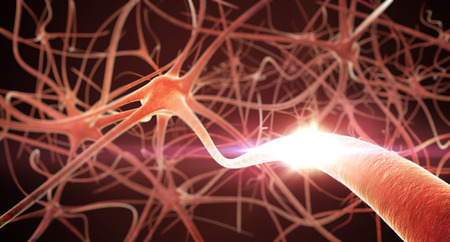New research has uncovered a potential new treatment option for patients with amyotrophic lateral sclerosis (ALS), a progressive neurodegenerative disorder that results in the gradual loss of motor neurons. Motor neurons in the brain and spinal cord are used for voluntary movements, the loss of which leads to muscle weakness, atrophy, and ultimately paralysis, including the loss of the ability to speak, swallow and breathe.
Approximately 5 in every 100,000 Americans – 30,000 individuals – have the disease and around 2 in every 100,000 are diagnosed with the disease in Western countries every year. The majority of people who develop the disease are aged between 40 and 70, and 20% more men than women develop the disease. Only 10% of individuals have an inherited genetic mutation that leads to the development of the disease, with 90% occurring without any family history. Half of people diagnosed with ALS survive for 3 years after diagnosis, and 25% live for 5 years or more. There is currently no cure for ALS, although four drugs have been developed to help manage some of the symptoms of the disease and slow disease progression, although their benefits are very limited.
A team of researchers in Japan have been investigating a specific type of stem cell – multi-lineage differentiating stress enduring (Muse) cells – which could potentially be used to significantly slow disease progression. Their studies show these cells have potential to reduce muscle shrinkage and promote motor neuron survival in mice.
Muse cells were first discovered in 2010 and are found in the blood, connective tissues, and bone marrow. What makes these stem cells unique is they have protein receptors that recognize damaged or dying cells and migrate to these cells when injected into the bloodstream. Muse stem cells have the ability to differentiate into the type of cell identified as damaged or dying and promote the repair of the tissue. What makes muse cells ideal for regenerative medicine is they are not recognized by the immune system as foreign, which means muse cells can be harvested from unmatched donors and can be used in treatments without immunosuppressive drugs. Muse cells have been used in several clinical trials on humans with varying degrees of success, including patients who have suffered strokes and myocardial infarctions.
To test whether muse cells could be of benefit to ALS patients, the researchers introduced fluorescent muse cells into mice with a SOD1 gene mutation that are used as a model for ALS (G93A mice). The researchers introduced the cells intravenously and directly into the spinal canal to determine the most effective way of introducing the cells. After a week, the researchers found that intravenous injection saw higher concentrations of the muse cells in the spinal cord, confirming this was the best method of administration. All mice survived and showed no side effects or differences in survival compared to mice given an injection of mesenchymal stem cells or the control group.
Mice that received the muse cells exhibited fewer signs of muscle atrophy in their hindlimbs that the other two groups and an analysis of their spinal cords showed they had higher numbers of viable motor neurons and a higher number of connections between the neurons and muscle cells.
The researchers believe muse cells can slow the progression of ALS by protecting the spinal cord against motor neuron death and could potentially be used in a promising treatment for ALS in humans.
You can read more about the study in the paper – Therapeutic benefit of Muse cells in a mouse model of amyotrophic lateral sclerosis – which was recently published in Scientific Reports. DOI: 10.1038/s41598-020-74216-4
